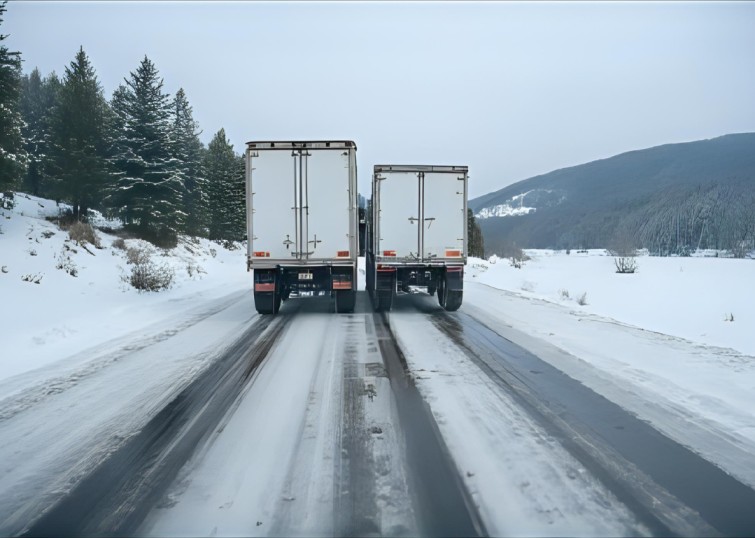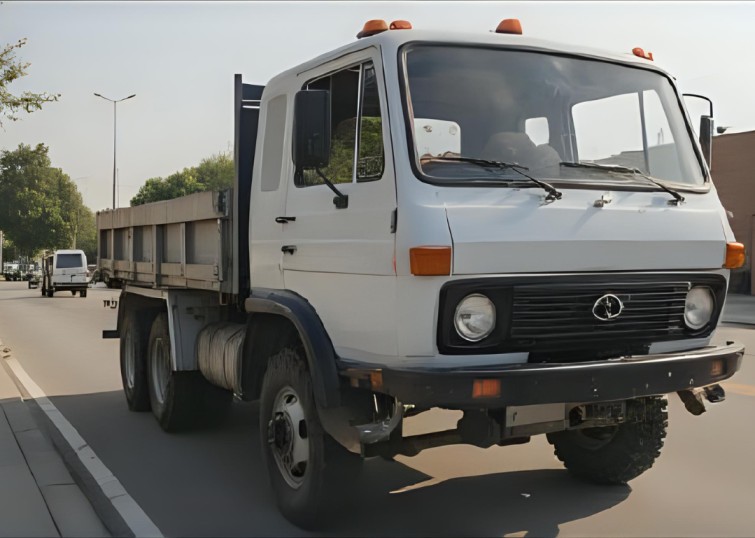TL;DR
Duty of care in construction site truck operations ensures the safety and well-being of workers and the public. It involves adhering to safety regulations, proper training, regular vehicle maintenance, and effective site management. By prioritizing duty of care, construction companies can prevent accidents, reduce liabilities, and create a safer work environment.
Key Highlights
- Understanding Duty of Care: Legal and ethical responsibility to ensure safety in truck operations.
- Compliance with Regulations: Adhering to OSHA standards and local laws.
- Driver Training and Certification: Ensuring operators are well-trained and qualified.
- Vehicle Maintenance: Regular inspections and maintenance to prevent mechanical failures.
- Site Safety Management: Implementing protocols to manage traffic and pedestrian movement.
- Emergency Preparedness: Planning and training for potential accidents or incidents.

Construction sites are high-risk environments, and the presence of large trucks and heavy equipment only heightens the danger. Unfortunately, many serious injuries and fatalities result from lapses in safety protocols and a failure to uphold a basic legal principle: the duty of care. Whether it’s a dump truck reversing without a spotter or a flatbed overloaded with unstable materials, failure to exercise reasonable caution can result in devastating consequences for workers, subcontractors, and bystanders alike. In Georgia, the duty of care is a legal obligation rooted in O.C.G.A. § 51-1-2, which defines ordinary diligence as “that degree of care which is exercised by ordinarily prudent persons under the same or similar circumstances.” When this duty is violated and harm occurs, affected parties may have grounds to pursue legal remedies.
The consequences of ignoring the duty of care go far beyond the physical injuries. Victims and their families are left dealing with mounting medical bills, missed wages, and a painful recovery, often while trying to figure out whether their injury qualifies under workers’ compensation or civil liability. Georgia law, including O.C.G.A. § 51-1-6, affirms that a person injured due to the failure of another to perform a legal duty is entitled to recover damages. Understanding how this duty applies specifically to truck operations on construction sites is essential for establishing fault, proving negligence, and securing fair compensation. This article will examine how the duty of care governs construction truck usage in Georgia and what victims can do when it’s breached.
Understanding Duty of Care in Construction Truck Operations
Duty of care refers to the legal and ethical obligation to ensure the safety and well-being of individuals within a particular environment. In the context of construction site truck operations, this involves taking all necessary measures to prevent accidents and injuries related to the use of heavy vehicles. This responsibility extends to workers, pedestrians, and anyone who might be affected by construction activities.
1. Legal Framework
Compliance with the Occupational Safety and Health Administration (OSHA) standards is fundamental. OSHA sets forth regulations that construction companies must follow to ensure safe operations. These include proper training for drivers, maintaining vehicles in good working condition, and implementing safety protocols on-site.
2. Ethical Responsibility
Beyond legal obligations, there is an ethical imperative to protect lives. Construction companies must foster a culture of safety where every employee understands the importance of duty of care and actively participates in maintaining a safe work environment.
Compliance with Safety Regulations
Adhering to safety regulations is a critical component of duty of care. These regulations are designed to mitigate risks associated with construction site truck operations.
1. OSHA Standards
OSHA provides comprehensive guidelines for construction safety, including standards for vehicle operation, traffic management, and personal protective equipment (PPE). Compliance with these standards helps prevent accidents and ensures a safe working environment.
2. Local and State Laws
In addition to federal regulations, construction companies must comply with local and state laws. For example, Georgia’s Occupational Safety and Health Act outlines specific requirements for construction safety, including the licensing of operators and the maintenance of equipment.
3. Regular Audits and Inspections
Conducting regular safety audits and vehicle inspections is essential to ensure ongoing compliance. These inspections help identify potential hazards and allow for timely corrective actions.
Driver Training and Certification
Proper training and certification of truck operators are vital for maintaining safety on construction sites.
1. Comprehensive Training Programs
Drivers must undergo thorough training programs that cover vehicle operation, safety protocols, and emergency procedures. Training should be updated regularly to reflect changes in regulations and industry best practices.
2. Certification Requirements
Operators should hold relevant certifications that demonstrate their competence in handling heavy machinery. Certifications also ensure that drivers are aware of safety standards and can respond appropriately in case of emergencies.
3.Continuous Education
Ongoing education and training help drivers stay informed about the latest safety techniques and regulatory changes. This continuous learning approach contributes to maintaining high safety standards on-site.
Regular Vehicle Maintenance
Maintaining trucks in optimal condition is crucial for preventing mechanical failures that can lead to accidents.
1. Routine Inspections
Regular vehicle inspections should be conducted to identify and address issues such as brake failures, tire wear, and engine problems. These inspections help ensure that trucks are safe to operate.
2. Preventive Maintenance
Implementing a preventive maintenance schedule helps in identifying potential problems before they escalate. Regular maintenance activities, such as oil changes and filter replacements, extend the lifespan of vehicles and enhance their reliability.
3. Record-Keeping
Keeping detailed maintenance records is important for tracking vehicle performance and ensuring compliance with safety regulations. These records can also be useful in identifying patterns that may indicate recurring issues.
Effective Site Safety Management
Managing safety on construction sites involves organizing traffic flow, controlling pedestrian access, and implementing safety protocols.
1. Traffic Control Measures
Establishing designated traffic routes for trucks helps prevent collisions and ensures smooth movement within the site. Traffic signs, barriers, and signals play a key role in guiding vehicle operations.
2. Pedestrian Safety
Creating safe zones for pedestrians and clearly marking walkways minimizes the risk of accidents. Physical barriers and adequate lighting can further enhance pedestrian safety.
3. Communication Systems
Effective communication between drivers and site workers is essential for coordinating movements and responding to hazards. Two-way radios and other communication tools facilitate real-time information sharing.
Emergency Preparedness and Response
Preparing for emergencies is a key aspect of duty of care, ensuring that construction sites can effectively respond to accidents or incidents.
1. Emergency Plans
Developing comprehensive emergency plans outlines the steps to be taken in case of an accident. These plans should include evacuation procedures, first aid protocols, and contact information for emergency services.
2. Training for Emergencies
Regular training sessions on emergency response procedures ensure that workers and drivers are prepared to act swiftly and effectively in crisis situations. Drills and simulations can help reinforce these skills.
3. Access to First Aid
Ensuring that first aid supplies and trained personnel are readily available is crucial for providing immediate assistance in case of injuries. Quick medical response can significantly reduce the severity of accidents.
Implementing Technology for Enhanced Safety
Leveraging technology can greatly improve safety in construction site truck operations.
1. GPS Tracking
GPS tracking systems allow supervisors to monitor vehicle movements in real-time. This helps in managing traffic flow and ensuring that trucks adhere to designated routes.
2. Collision Avoidance Systems
Advanced collision avoidance technologies use sensors and cameras to detect potential hazards, alerting drivers to take corrective actions. These systems can prevent accidents by providing timely warnings.
3. Automated Reporting
Automated systems for safety reporting streamline the process of documenting incidents and near-misses. This data can be analyzed to identify trends and implement preventive measures.
Establishing who failed in their duty of care is critical after a truck-related accident on a construction site. A knowledgeable construction truck accident attorney can evaluate whether the contractor, operator, or another party breached their legal obligation to maintain a safe environment and help injured victims pursue compensation under Georgia law.
Conclusion
Duty of care is not just a legal standard, it’s the backbone of safety in construction site truck operations. From enforcing OSHA-compliant protocols to ensuring every driver is trained, licensed, and attentive, construction companies have a profound responsibility to minimize risks on their worksites. Regular vehicle maintenance, proper supervision, and emergency planning all stem from this foundational obligation. In Georgia, where negligence claims are governed by statutes such as O.C.G.A. § 51-1-2 and O.C.G.A. § 51-1-6, failing to uphold a reasonable standard of care can open the door to serious legal and financial consequences.
Beyond legal compliance, a strong commitment to duty of care cultivates a culture of accountability and trust, one where workers feel valued and protected. Employers who invest in proactive safety measures, modern technologies, and continuous education not only prevent accidents but also boost morale and productivity across the board. If you or someone you know has been injured due to a failure in construction site safety, or if you’re a contractor looking to strengthen your risk mitigation practices, contact us today for a free case evaluation. Our team is here to help you understand your rights, assess liability, and protect your future.



